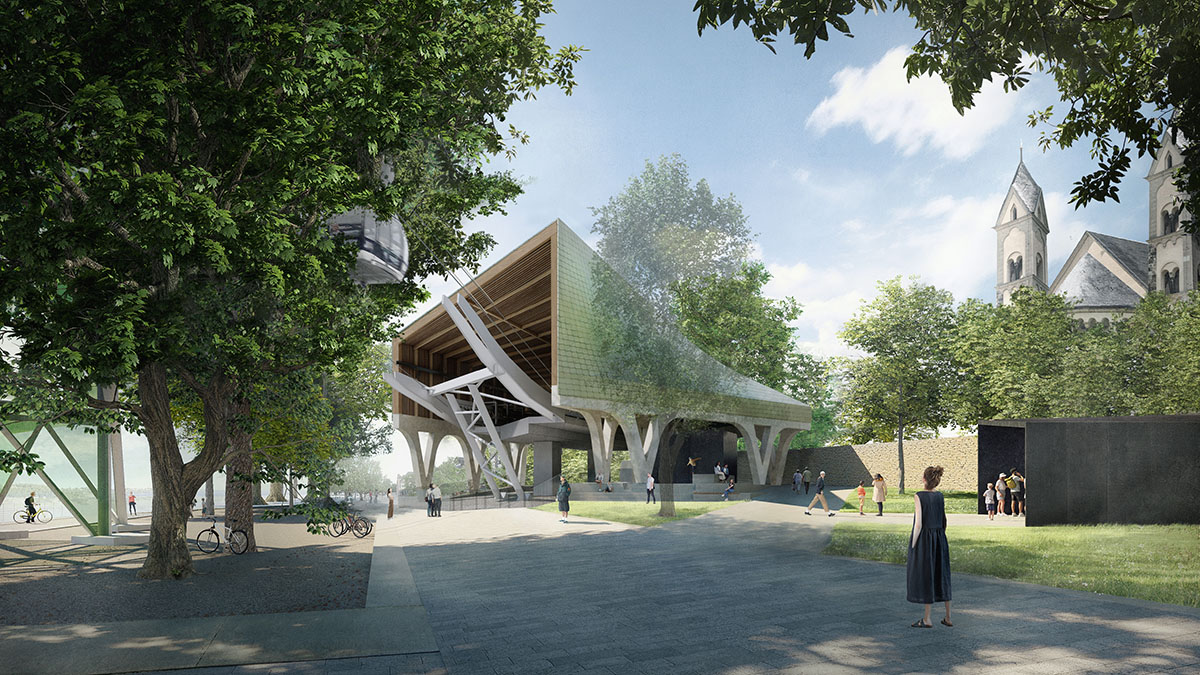Snhetta wins competition for cable car stations in Koblenz, Germany
Submitted by WA ContentsSnhetta wins competition for cable car stations in Koblenz, Germany Germany Architecture News - Nov 20, 2024 - 14:43 html PUBLIC "-//W3C//DTD HTML 4.0 Transitional//EN" "http://www.w3.org/TR/REC-html40/loose.dtd"Norwegian architecture firm Snhetta has won a new competition for the new city cable car stations in Koblenz, Germany.The Upper Middle Rhine Valley's designation as a UNESCO World Heritage Site requires extra caution, according to the firm. The expressive stations respectfully integrate into the historical setting as modern statements.Since 2011, Ehrenbreitstein Fortress on the opposite side of the Rhine has been connected to Koblenz's city center via a cable car. The popular, eco-friendly mode of transportation was initially intended to be a temporary structure for the Federal Horticultural Show, but it is now intended to be used permanently.A redesign of the stations was required due to technical requirements and the location's sensitive historical context. Snhetta's proposal for the sculptures for the valley and mountain stations, which form a "cohesive pair" and respond sensitively to the respective context, won the architectural competition held by the cable car operator.The Basilica of St. Castor, which is listed, is close to the valley station. The gently curved shape reinterprets the city's architectural heritage and motifs while paying homage to the historic basilica.According to the jury, "the design exhibits restraint within the World Heritage Site without losing any of its architectural significance." "The St. Castor Church is referenced in the design by the graceful roof shape."A wooden framework supported by V-shaped concrete columns holds up the metal roof shell. While the gently sculpted concrete columns are reminiscent of the church's vaulted stonework and traditional masonry along the river, the metal shingles on the roof are inspired by the city's traditional faade and roof motifs.The reflections and play of light and shadow along the river and the tree-lined riverbank are further enhanced by the subtle green hues and the glossy metal cladding.This subtle effect is further enhanced by the station's curved shape. The station's open area blends in with the Rhine promenade's natural surroundings.The mountain station's technical facilities are also covered by a common, gently chamfered metal roof. Strong, stoic shapes establish a connection to the Ehrenbreitstein stronghold.The metal cladding, whose warmer hues allude to the earthy tones of the fortress walls, supports the wooden structure on slender columns. In front of the station, a "flying" roof incorporates an existing tree, provides a covered waiting area, and spans the ticket office, technical rooms, and kiosk.The historic landscape in front of the fortress is clearly horizontal, as highlighted by the station and the cantilevered canopy. Similar to the bottom station, the top station will keep all of the cable car's technical installations while adding amenities for long-term use."The cultural landscape and identity of the Upper Middle Rhine Valley are characterised by centuries of human intervention," Patrick Lth, Snhetta Partner and Managing Director of the Innsbruck studio."The new stations are part of this natural and cultural context and with our design we continue the dialogue with the significant cultural landscape of Koblenz," Lth added.Snhetta, recently, completed a new expansion and site redesign for the Joslyn Art Museum in Omaha, United States. Moreover, the firm completed the Blanton Museum of Art at the University of Texas, Austin. In addition, the firm also completed Beijing City Library in China, with a giant canopy supported by ginkgo trees and wraped by a fully glazing faade. All images Snhetta.> via Snhetta


